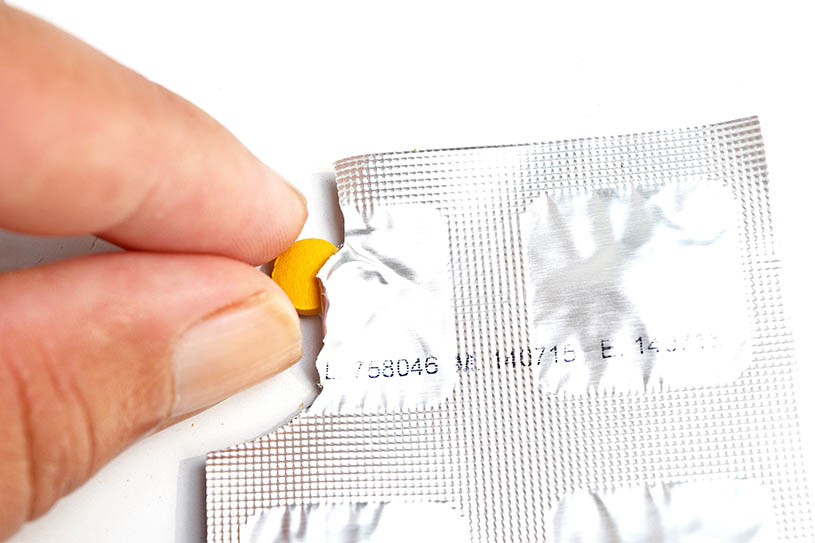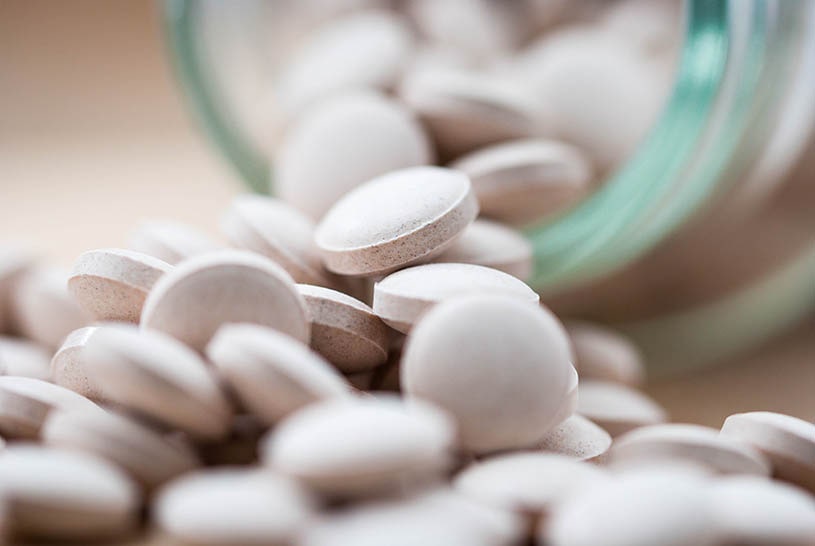Focalin, the brand form of Dexmethylphenidate, is a central nervous system (CNS) stimulant medically used for the treatment of Attention-Deficit/Hyperactivity Disorder (ADHD) in children, adolescents, and adults. Due to the effects of Dexmethylphenidate on catecholamine neurotransmitters, particularly Dopamine, it possesses the propensity for the development of substance misuse, defined as nonmedical or illicit use, and addiction.
Table Of Contents:
This is particularly concerning as the prescription and use of central nervous system stimulant drugs have been on a steady rise for the last several decades.
This article will discuss the various aspects of Focalin abuse and addiction including the reasoning and mechanism behind Dexmethylphenidate’s addictiveness, statistics related to its abuse, the effects of Focalin abuse on the human body, and lastly the available treatment options for Focalin addiction.
What Is Focalin?
Focalin is classified as a Central Nervous System (CNS) Stimulant medication that is commonly employed for the treatment of Attention-Deficit/ Hyperactivity Disorder (ADHD) in children(≥6 years), adolescents, and adults. Dexmethylphenidate is the form of Focalin generic, as well as the active ingredient. It is the more pharmacologically active d-enantiomer of the two active isomers that Methylphenidate is composed of, namely d-methylphenidate and l-methylphenidate.

More About Stimulants:
Dexmethylphenidate was approved for medical use in the US in 2001. Although currently this drug is not identified as a narcotic, it is strictly controlled by the United States Drug Enforcement Administration (DEA) and is assigned the status of a Schedule II substance, which means the drug has a high potential for abuse, and may lead to severe psychological and physical dependence. The use of Dexmethylphenidate requires a prescription
What Is Focalin Used For?
The primary FDA-approved usage of Dexmethylphenidate is for the treatment of Attention-Deficit/Hyperactivity Disorder (ADHD) in children(≥6 years), adolescents, and adults.
ADHD itself is a neurodevelopmental disorder that presents in childhood(<12y) with symptoms of persistent inattention, hyperactivity, and impulsivity that are inconsistent with the patient’s developmental stage and interfere with or reduce the quality of social, academic, or occupational functioning.
The exact information on how exactly taking this medication helps treat the symptoms of ADHD is not well known. However, It is surmised that the Focalin mechanism of action underlying the pathophysiology of ADHD is related to the inadequate production of Norepinephrine and Dopamine in the prefrontal cortex. All CNS stimulant medications used in ADHD work by increasing the availability of these two monoamines. Dexmethylphenidate specifically blocks the reuptake of Norepinephrine and Dopamine into the presynaptic neuron and increases the release of these monoamines into the extraneuronal space, resulting in reduced symptoms of hyperactivity, impulsivity, and/or inattention.
Off-label usage of Dexmethylphenidate
Dexmethylphenidate is prescribed as an off-label, second-line treatment for narcolepsy in adults. Narcolepsy is a chronic disorder of the sleep-wake control mechanisms within the brain that interferes with both daytime wakefulness and nighttime sleep, causing constant drowsiness. Dexmethylphenidate for adults with narcolepsy supposedly provides help due to its brain stimulant properties.
Following Are a Few Other Off-Label Uses of Dexmethylphenidate:
| Psychomotor Hyperactivity in Children with Autism | Increased levels of Dopamine appear to help control impulsivity, hyperactivity, and inattention. |
| Refractory Depression in the Geriatric Population | Possibly related to the similar mechanisms of action of both Dexmethylphenidate and antidepressants. These drugs both inhibit the reuptake of monoamines such as Norepinephrine. |
| Chronic fatigue in patients with cancer | The central nervous system stimulant effects are bound to be at play here as well, however, the exact mechanism is unclear. |
| Apathy of Alzheimer’s disease. | Apathy refers to a lack of enthusiasm, interest, or concerns, and during Alzheimer’s is thought to be related to a dysfunction in the dopaminergic brain reward system. Dexmethylphenidate through increasing the level of Dopamine in the central nervous system may help with Alzheimer’s apathy. |
Even though Off-label usage refers to the use of pharmaceutical drugs for an unapproved indication or in an unapproved age group, dosage, or route of administration, it is important to remember that healthcare providers imply this treatment option to achieve positive therapeutic responses and help people in unique circumstances.
Focalin Generic And Brand Names
Dexmethylphenidate hydrochloride is the form of Focalin Generic as well as the active ingredient.
Brand Names Under Which Dexmethylphenidate Hydrochloride May Be Encountered Include:
- Focalin: Immediate release(IR) and Extended-release (XR)
- Adhansia XR
- JORNAY PM Extended-Release
- Ritalin
- Ritalin LA
Internationally it may be encountered as Attenade (Celgene).
Focalin vs Focalin XR: What is the Difference
Focalin and Focalin XR (extended-release) both contain Dexmethylphenidate. The main difference between these two agents is the dosing regimen with which people have to use these medications.
This medication is short-acting and begins to work in 30–60 minutes after administration. The quick onset of action is a major advantage of Focalin medication, but the major drawback is its short duration of action of 2–5 hours which requires that the drug be taken two to three times per day.
Focalin XR offers similar benefits to therapy, but with an added benefit of a prolonged duration of action that allows a once-a-day dosing regimen.
For example, instead of taking IR Dexmethylphenidate 2.5 mg two times a day, people may take Focalin XR 5 mg once a day in the morning for the entire day, which is more convenient.
Lastly, it appears that the abuse liability of the extended-release (XR-16%) form of Dexmethylphenidate is much lower than that of the immediate-release form (IR-81%). This was demonstrated in a survey by Bright and Delphia which evaluated the abuse potential of prescription stimulants among patients with ADHD.
Focalin Dosage Forms And Strength
Focalin dosage is unique to each patient and is individualized based on their clinical response to therapy and treatment-associated side effects. Furthermore, the dosing for Focalin medication is different between adults and pediatric patients.
| DOSE AND RELEASE | COLOR | SHAPE | IMPRINT |
| 2.5 MG IR | Blue | U | D 2.5 |
| 5 MG IR | Yellow | U | D 5 |
| 5 MG XR | Blue | Capsule Shape | NVR D5 |
| 10 MG IR | White | U | D 10 |
| 10 MG XR | Brown | Capsule Shape | NVR D10 |
| 15 MG XR | Green | Capsule Shape | NVR D15 |
| 20 MG XR | White | Capsule Shape | NVR D20 |
| 25 MG XR | Blue and White | Capsule Shape | NVR D25 |
| 30 MG XR | Beige and White | Capsule Shape | NVR D30 |
| 35 MG XR | Blue and Brown | Capsule Shape | NVR D35 |
| 40 MG XR | Green and White | Capsule Shape | NVR D40 |

t is important to remember that the dosing schedule for Focalin ADHD medication should be selected for a patient by their prescribing physician. Furthermore, it is not recommended to alter the amount or the frequency with which Focalin ADHD medication is taken without first consulting the prescribing physician.
Is Focalin Addictive?
As previously mentioned, Dexmethylphenidate works in the central nervous system to increase the availability of two catecholamines, Dopamine and Norepinephrine, by promoting their release from neurons and preventing their reuptake. This effect is particularly potent for the Dopaminergic neurons projecting from the ventral tegmental area (VTA) in the midbrain to the cerebral cortex and the limbic areas.
This pathway has been termed the “reward circuit pathway”, and its activation is the probable mechanism behind the development of Focalin addiction in people.
Thus, although extensive literature indicates both the short-term and longer-term effectiveness and tolerability of the stimulants such as Focalin medication in the treatment of ADHD, there are also significant long-standing preclinical and public health studies that highlight the liability for abuse and ultimately the development of dependence( Focalin addiction) to the same stimulants used in the treatment of ADHD. These considerations may force patients to look for alternatives to Dexmethylphenidate.
What Makes Focalin Addiction And Abuse so Frequent?
The number one reason that lies behind the high rates of Focalin addiction is its wide availability. Based on a US National Survey of Children’s Health in 2003, out of the 4.4 million children aged 4 to 17, who had received a lifetime diagnosis of ADHD, around 56% or 2.5 million were prescribed ADHD medications. Out of this large pool of prescription users, it was reported that around 23% of the middle and high school students who had prescriptions for stimulants were approached to either sell, give, or trade their stimulant medications.
Furthermore, ignorance also has a role to play in the frequency of misuse and the development of Focalin addiction. In a study that evaluated stimulant use and the potential for abuse in Wisconsin published in the Journal of Developmental and Behavioral Pediatrics, it was reported that no child thought that drugs used in the treatment of ADHD could lead to abuse.
Lastly, the rapid onset of its action(~30min), especially if used parenterally, could potentiate and reinforce the liability of Focalin abuse and the development of addiction.
Focalin Abuse Statistics And Demographics
According to statistics provided by the ClinCalc DrugStats Database regarding this medication, over 2 million prescriptions of this medication were issued in the US in the year 2016. The availability of this drug in the US keeps increasing, which is an integral part of the abuse potential of a drug.
Below Are Offered Relevant Statistical and Demographic Information Related to Focalin Abuse and Addiction:
- Past year prevalence of stimulant abuse, which includes Focalin abuse, was reported to be 5 to 9% in grade school and high school-age children and 5% to 35% in college-age individuals.
- Another study found that out of 12,990 students in grades 7 to 12 found that 6.6% had used non-prescribed Dexmethylphenidate in the year before the survey.
- A survey of more than 10,000 randomly selected students from 119 colleges found that 6.9% had a lifetime use history and 2.1% had a past month history of non-medical prescription stimulant use.
- A study that evaluated the context of stimulant misuse in undergraduate college students found that 58-69% of students misused stimulants for increased concentration, 43% for increased alertness, 43% for its euphoric effects, and 14-30% for experimentation or other reasons.
- It has also been reported that the incidence of stimulant/Focalin abuse is higher among white people.
- Another study demonstrated that men report stimulant misuse more than women, but women have a higher liability for the development of stimulant/Focal addiction.
- The route of stimulant misuse is most commonly by oral route followed by intranasal administration.
- It is also suggested that people who misuse stimulants are also likely to have substance use disorder and concomitantly abuse alcohol, marijuana, or other drugs.
Based on the available information it is clear that misuse of stimulant medications, including Dexmethylphenidate, is quite prevalent, especially in adolescents.
Symptoms and Signs of Dexmethylphenidate Abuse And Addiction
There can be two different sets of symptoms to look for in individuals who misuse stimulants, including Dexmethylphenidate. One set of symptoms will be associated with CNS stimulant intoxication as a result of abuse and the other will be associated with Stimulant use disorder, which denotes addiction to Dexmethylphenidate and includes the criteria of generalized Substance Use Disorder (SUD).
Symptoms and Signs Stimulant Intoxication
Individuals who abuse stimulants, including Focalin ADHD medication, will display a set of behavioral and physical signs and symptoms of stimulant abuse.
The behavioral manifestations can include elation, euphoria, heightened self-esteem, a perceived improvement on mental and physical tasks, agitation, irritability, impaired judgment, impulsive and potentially dangerous sexual behavior, aggression, a generalized increase in psychomotor activity, and potentially, symptoms of mania.
The physical health manifestations can include dilated pupils, psychomotor agitation, tachycardia, sweating or chills, arrhythmias or chest pain, hypertension, dyskinesias, dystonias, weight loss, nausea or vomiting, muscular weakness, confusion, seizures, or coma.
Symptoms and Signs of Stimulant Use Disorder
As mentioned above, dependence and addiction to stimulants, including Dexmethylphenilate, denotes a Stimulant Use Disorder, a subtype of Substance use disorder included in The Diagnostic and Statistical Manual of Mental Disorders.
The Symptoms and Signs of Dexmethylphenidate Addiction Could Include:
- A rapid downward spiral of a person’s abilities to cope with work- and family related obligations and stresses.
- Cravings to use stimulants.
- Requiring increasingly high doses of stimulants to obtain the usual effect
- Using stimulants in situations that put the user or others at harm
- Using stimulants desire their adverse effects on the user’s health
- Wanting to reduce or cease the use of stimulants but being unable to do so
These characteristic patterns of behavior will occur in conjunction with the physical health and behavioral manifestations of stimulant intoxication, such as weight loss, paranoia, agitation, etc. The combination of these symptoms and signs will help identify patients who may need help and addiction treatment.
Dangers of Dexmethylphenidate Abuse And Addiction
The use of Dexmethylphenidate can be associated with several dangerous conditions. High dose or sustained use of Dexmethylphenidate can lead to Stimulant Intoxication Delirium. The use of stimulants can also be associated with the development of stimulant-induced bipolar, depressive, anxiety, and obsessive-compulsive disorders. Chronic misuse of stimulants can also be linked with sexual dysfunction such as erectile dysfunction. Dangerous somatic health effects of Focalin medication misuse can be related to Dexmethylphenidate long-term side effects, such as myocardial infarction, severe hypertension, cerebrovascular disease, ischemic colitis, seizures, coma, and even death.

Treating And Regulating Focalin Addiction
The recommended therapy for help with Dexmethylphenidate addiction consists of supportive measures such as protecting the patient against any self-harm or similar behavior. Furthermore, long-term use or Focalin abuse can result in tolerance to the drug and discomforting withdrawal symptoms. Those who suffer from addiction are advised to go through behavioral therapies in rehabs and to avoid any external stimuli that may aggravate their need to consume the drug and to prevent adverse health reactions associated with withdrawal and detoxification. The treatments for addiction also include detoxifying their body and going through an intensive process of therapy, medication, and counseling.
Hope Without Commitment
Find the best treatment options. Call our free and confidential helpline
Most private insurances accepted
Page Sources
- Ghanizadeh, A., Molla, M., & Olango, G. J. (2019). The effect of stimulants on irritability in autism comorbid with ADHD: a systematic review. Neuropsychiatric disease and treatment, 15, 1547–1555. https://doi.org/10.2147/NDT.S194022
- Herrmann, N., Rothenburg, L. S., Black, S. E., Ryan, M., Liu, B. A., Busto, U. E., & Lanctôt, K. L. (2008). Methylphenidate for the treatment of apathy in Alzheimer disease: prediction of response using dextroamphetamine challenge. Journal of clinical psychopharmacology, 28(3), 296–301.
- Jensen, LS, et al. “Methylphenidate Misuse in Adult Patients and the Impact of Therapeutic Use.” Human & Experimental Toxicology, vol. 34, no. 5, May 2015, pp. 460–467, doi:10.1177/0960327114543935.
- Kroutil LA, Van Brunt DL, Herman-Stahl MA, et al. Nonmedical use of prescription stimulants in the United States. Drug Alcohol Depend. 2006;84:135Y143
- Liu, F., Minami, H., & Silva, R. R. (2006). Dexmethylphenidate hydrochloride in the treatment of attention deficit hyperactivity disorder. Neuropsychiatric disease and treatment, 2(4), 467–473. https://doi.org/10.2147/nedt.2006.2.4.467
- Moen, M.D., Keam, S.J. Dexmethylphenidate Extended-Release. CNS Drugs 23, 1057–1083 (2009). https://doi.org/10.2165/11201140-000000000-00000
- Novartis Pharmaceuticals Corporation. (2021, April). Full Prescribing Information for Focalin. https://www.novartis.us/sites/www.novartis.us/files/FocalinXR.pdf
- Morton, W. A., & Stockton, G. G. (2000). Methylphenidate Abuse and Psychiatric Side Effects. Primary care companion to the Journal of clinical psychiatry, 2(5), 159–164. https://doi.org/10.4088/pcc.v02n0502
- Musser, C. J., Ahmann, P. A., Theye, F. W., Mundt, P., Broste, S. K., & Mueller-Rizner, N. (1998). Stimulant use and the potential for abuse in Wisconsin as reported by school administrators and longitudinally followed children. Journal of developmental and behavioral pediatrics: JDBP, 19(3), 187–192.
- Pary, R., Scarff, J. R., Jijakli, A., Tobias, C., & Lippmann, S. (2015). A Review of Psychostimulants for Adults With Depression. Federal practitioner: for the health care professionals of the VA, DoD, and PHS, 32(Suppl 3), 30S–37S. https://doi.org/10.1097/00004703-199806000-00006
- Rojí, R., & Centeno, C. (2017). The use of methylphenidate to relieve fatigue. Current opinion in supportive and palliative care, 11(4), 299–305. https://doi.org/10.1097/SPC.0000000000000296
- Sarkhel S. (2009). Kaplan and Sadock's Synopsis of Psychiatry: Behavioral Sciences/Clinical Psychiatry, 10th edition. Indian Journal of Psychiatry, 51(4), 331.
- Teter CJ, McCabe SE, Cranford JA, et al. Prevalence and motives for illicit use of prescription stimulants in an undergraduate student sample. J Am Coll Health. 2005;53:253Y262.
- Teter CJ, McCabe SE, LaGrange K, et al. Illicit use of specific prescription stimulants among college students: prevalence, motives, and routes of administration. Pharmacotherapy. 2006;26:1501Y1510.
- Wu, L., Pilowsky, D. J., Schlenger, W. E., & Galvin, D. M. (2006;2007;). Misuse of methamphetamine and prescription stimulants among youths and young adults in the community. Drug and Alcohol Dependence, 89(2), 195-205. https://login.research4life.org/tacsgr1doi_org/10.1016/j.drugalcdep.2006.12.020
- Wu, L. T., & Schlenger, W. E. (2003). Psychostimulant dependence in a community sample. Substance use & misuse, 38(2), 221–248. https://doi.org/10.1081/ja-120017246





